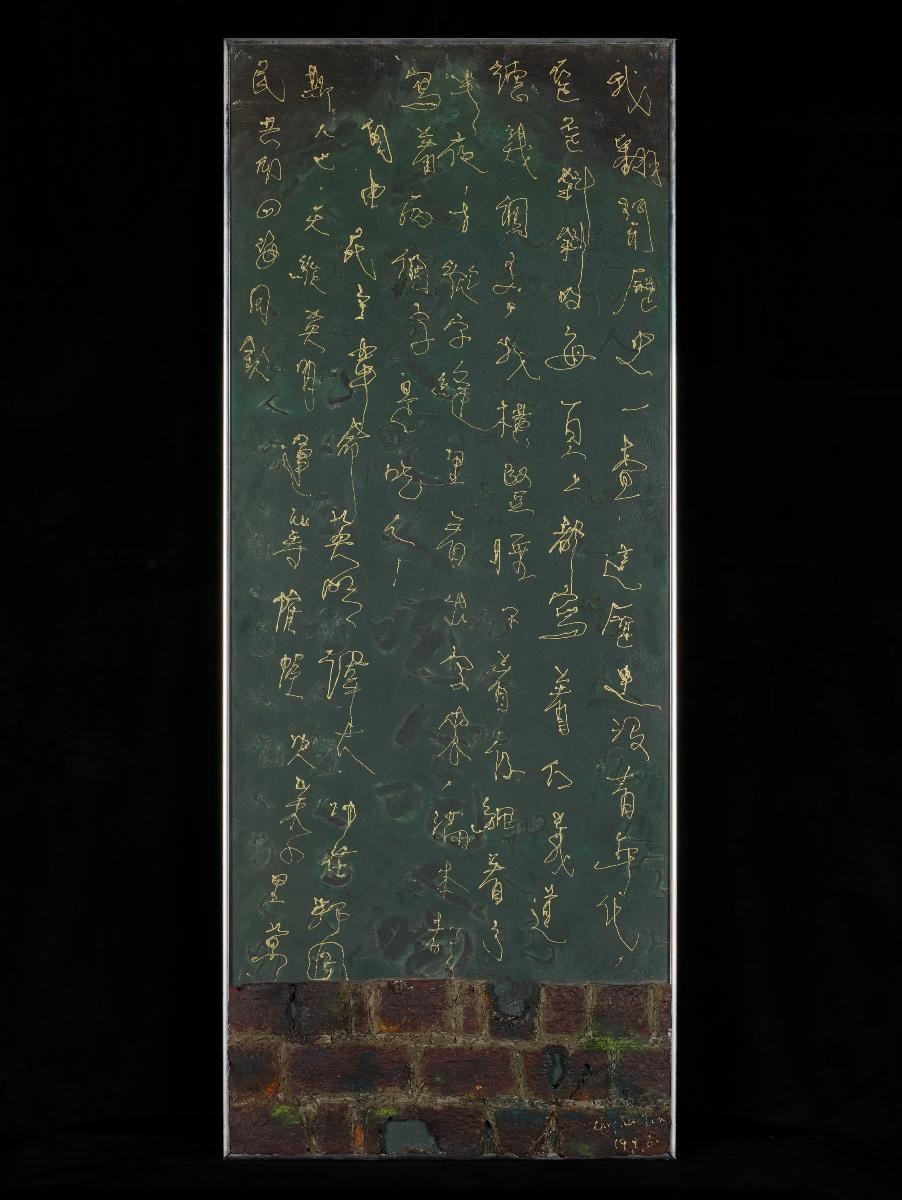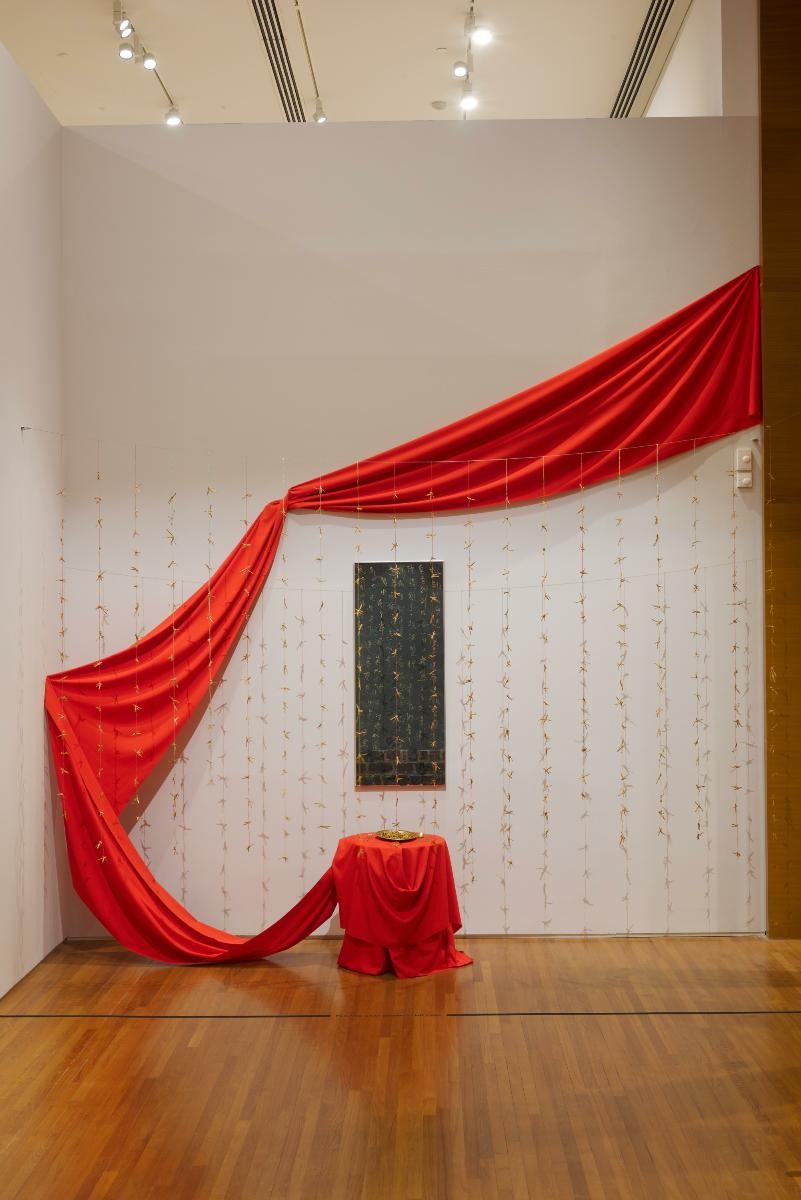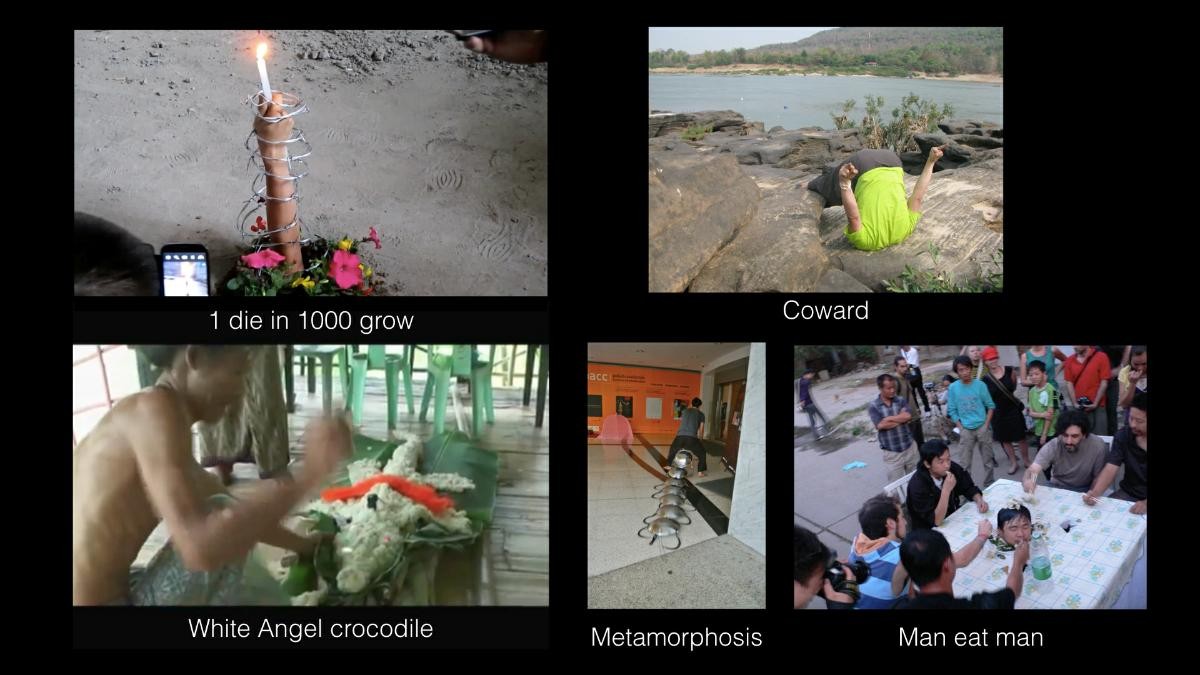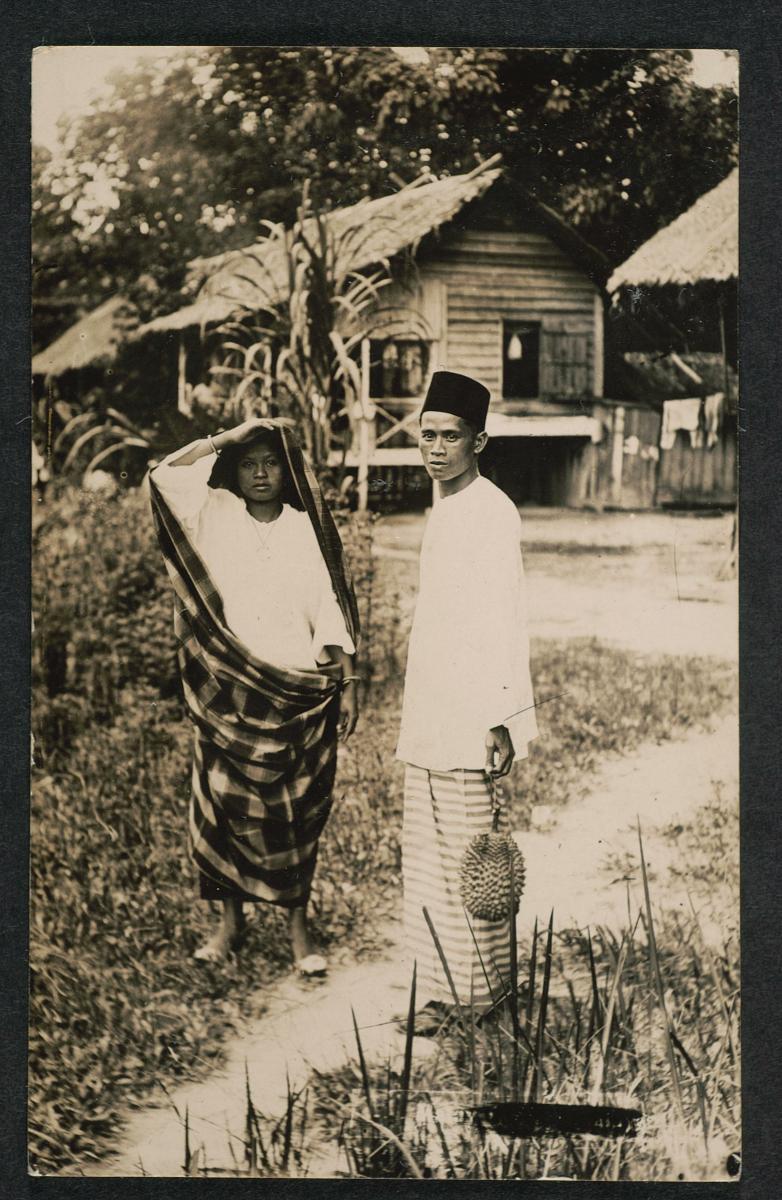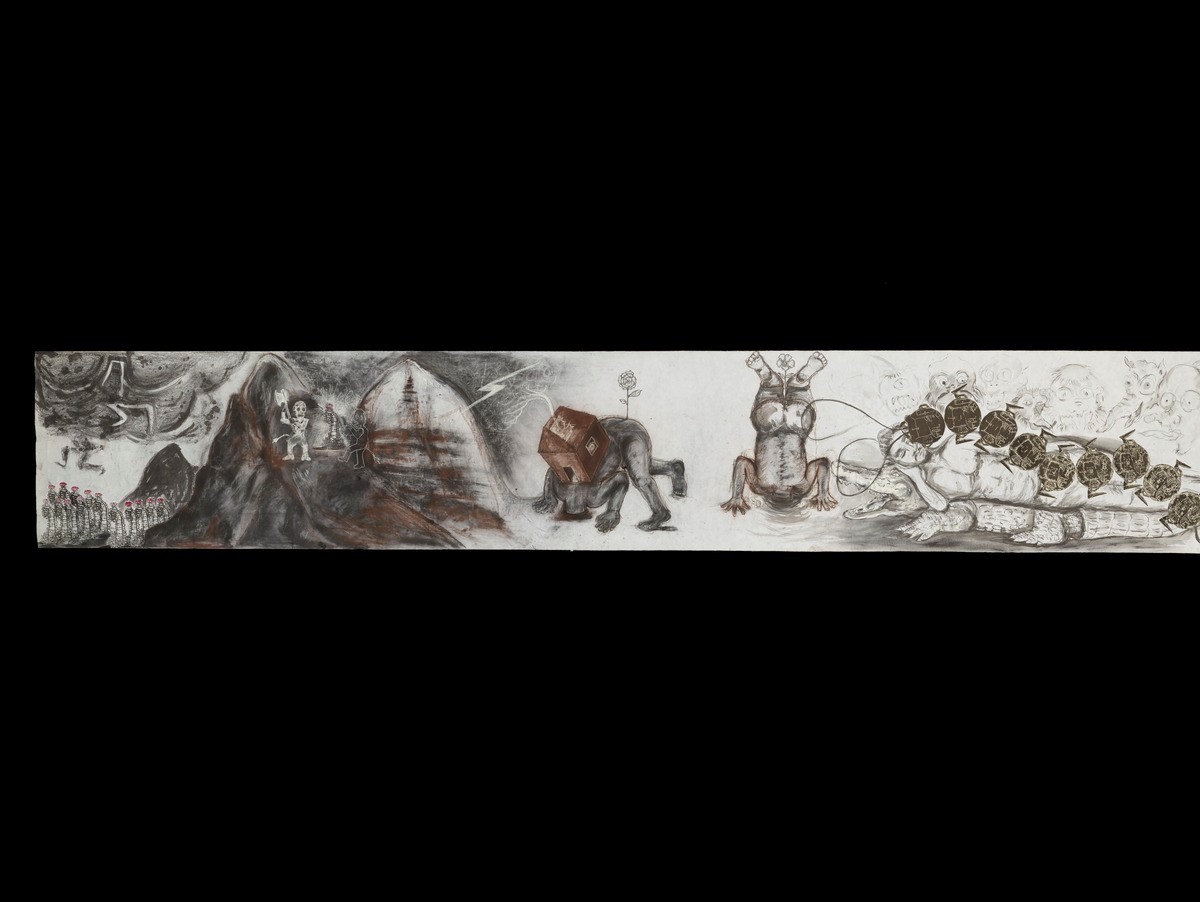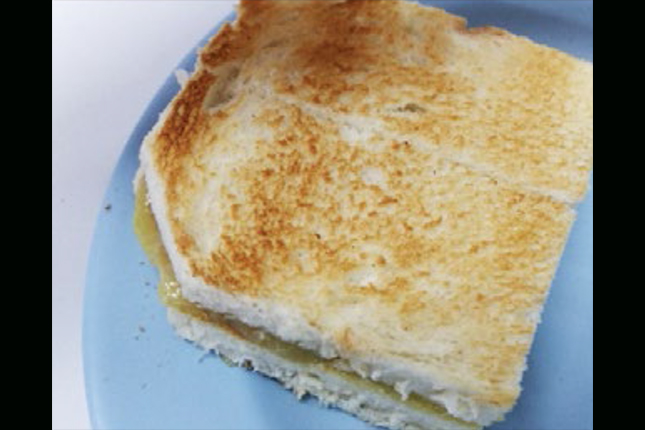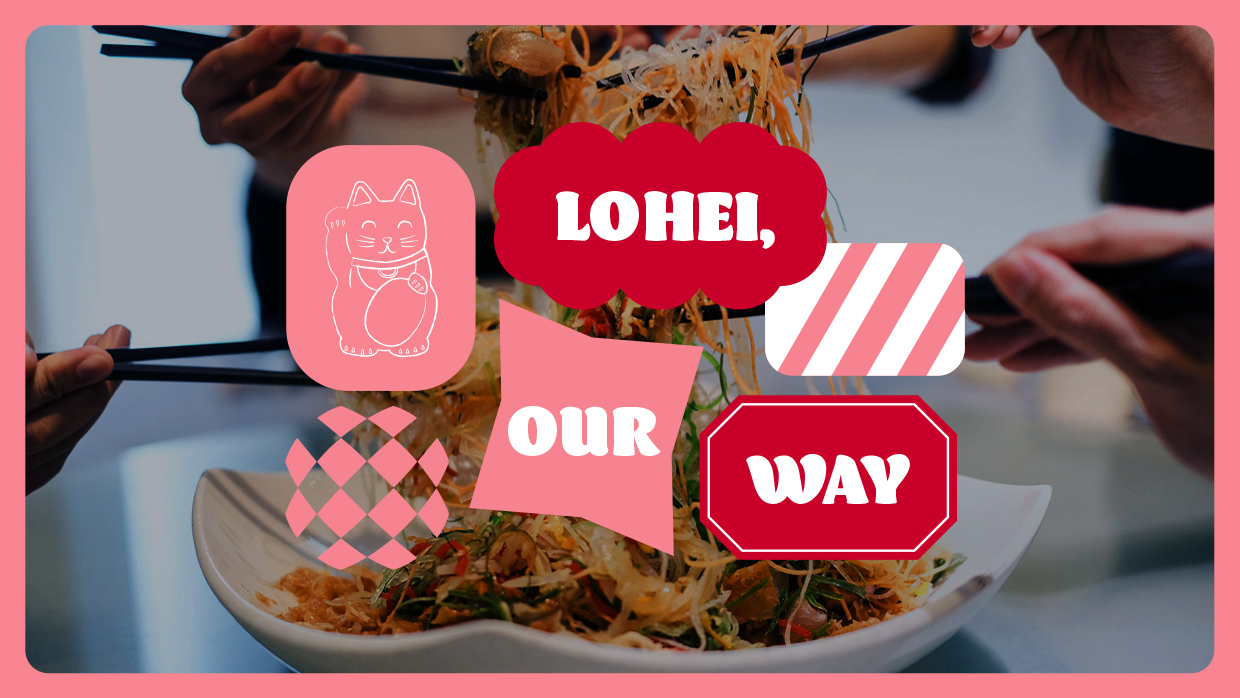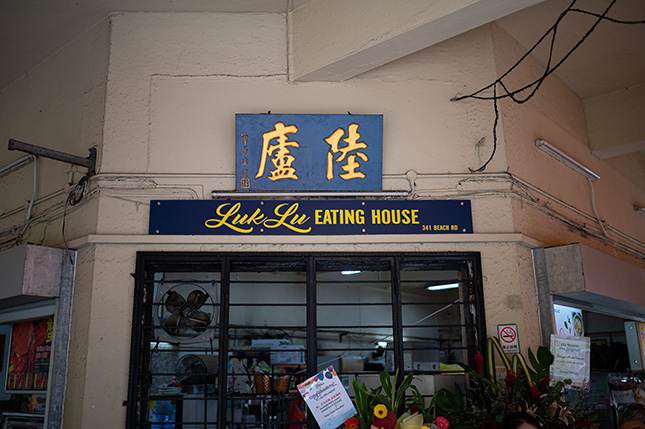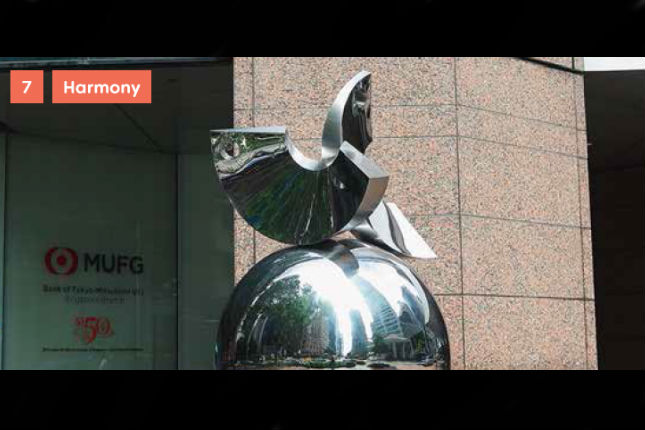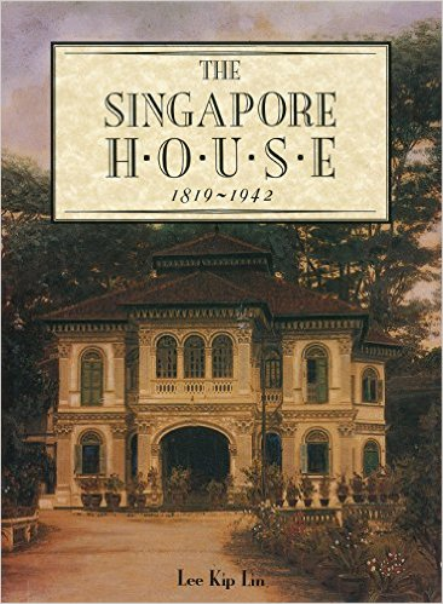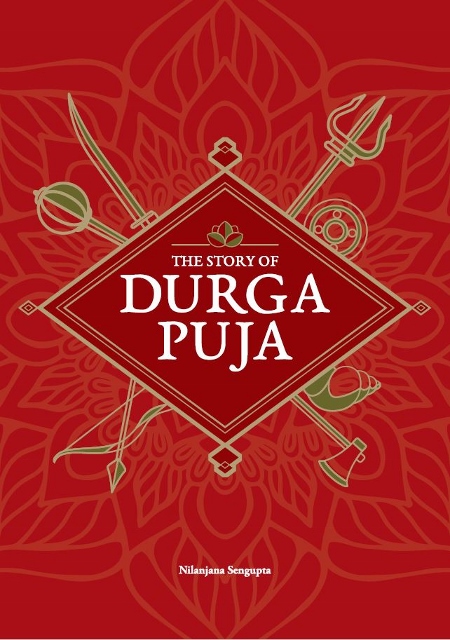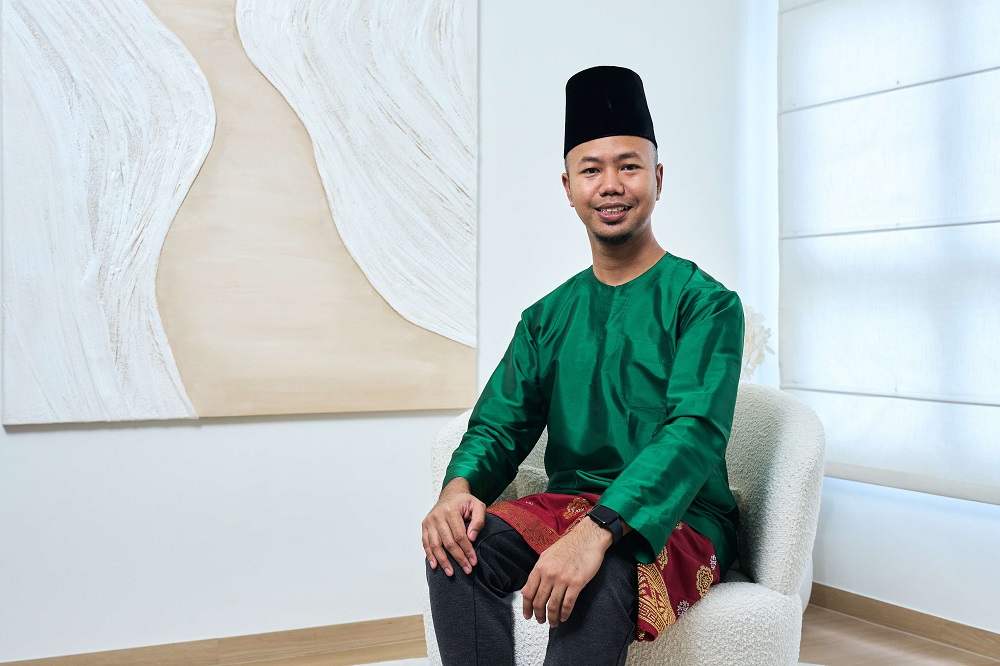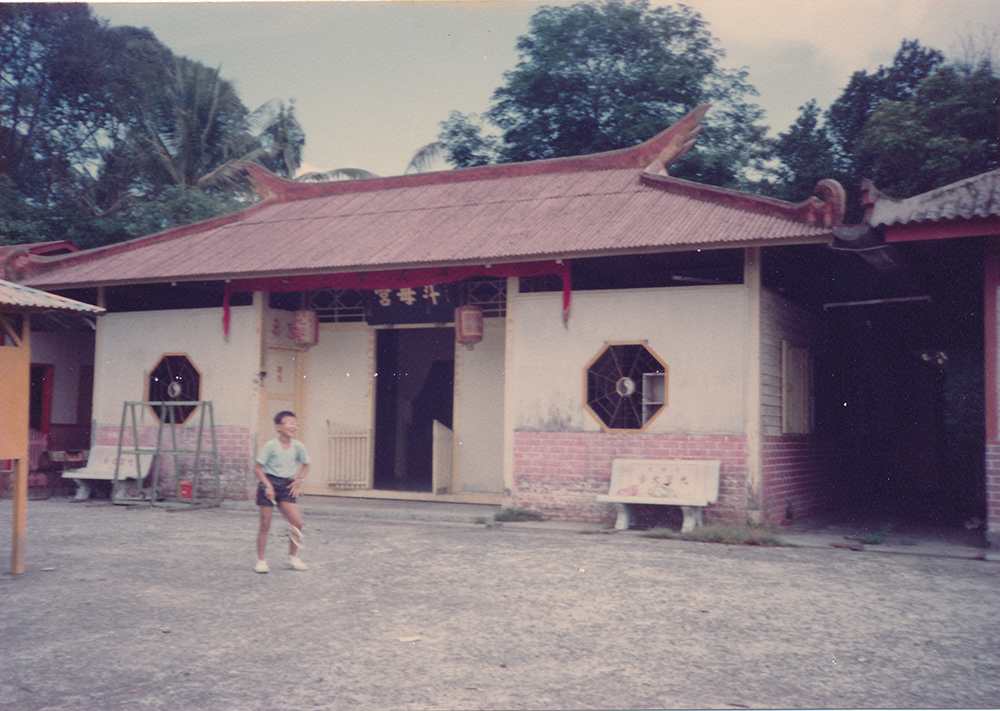Image size: 129.0 x 51.0 cm
The title of this installation is a nod to Lu Xun’s use of cannibalism as a metaphor in renowned Chinese writer Lu Xun’s landmark text A Madman’s Diary (狂人日记). The dark yet humourous work is composed of hundreds of human-life figures made of kim-chiam, or dried day lily buds. Placed at the centre is a calligraphic painting that Chng completed in 1996, inscribed with an excerpt from the third chapter of A Madman’s Diary.The excerpt describes the moment when the protagonist sees the words “eat man” (吃人) all over the history tomes he is reading. This fuels his paranoia that his entire village and immediate family have become cannibals, but he is the only person who perceives this threat and is deemed insane. Lu Xun used notions of insanity and cannibalism as metaphors in his writings to express the view that the traditions of feudal society were outmoded in early 20th century China.Chng has transposed this story into an installation. Her kim-chiam, or dried daylilybud figures, first appeared as a kitchen ingredient in 1980. Dried day lily buds, referred to as kim-chiam (golden needles) in Chng’s Hokkien dialect, are a recurring theme in many of her works. In 1980, she became inspired by this traditional Chinese ingredient in her friend's kitchen while taking her Advanced Printmaking course at the Hornsey College of Art in Middlesex Polytechnic, London. As she knotted each piece of kim-chiam for cooking, she discovered that folding the spindly dried vegetable produced animated figures and photographed these as a visual source for her print works. Chng continued to incorporate kim-chiam into her works, including etchings, monoprints and assemblages, as well as the installation Man Eat Man. For her, working with kim-chiam was part of a playful and improvisational approach to everyday materials over a sustained period of time.




